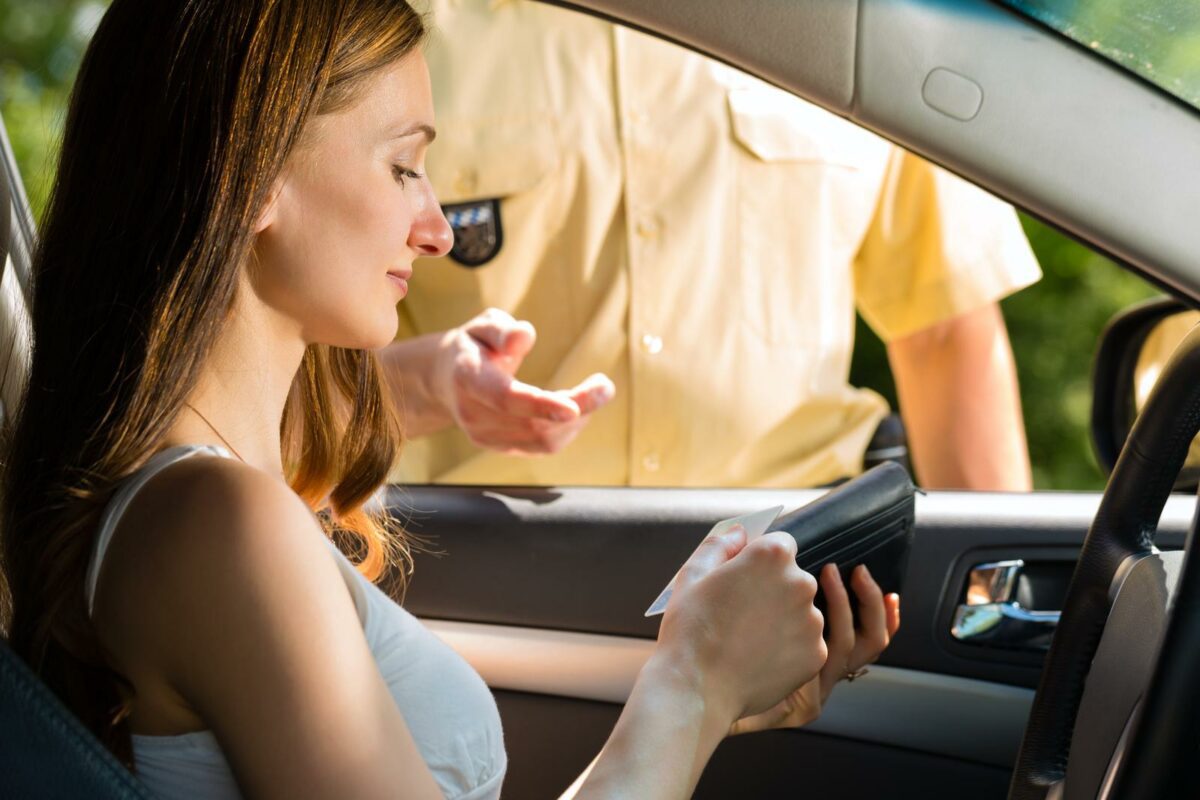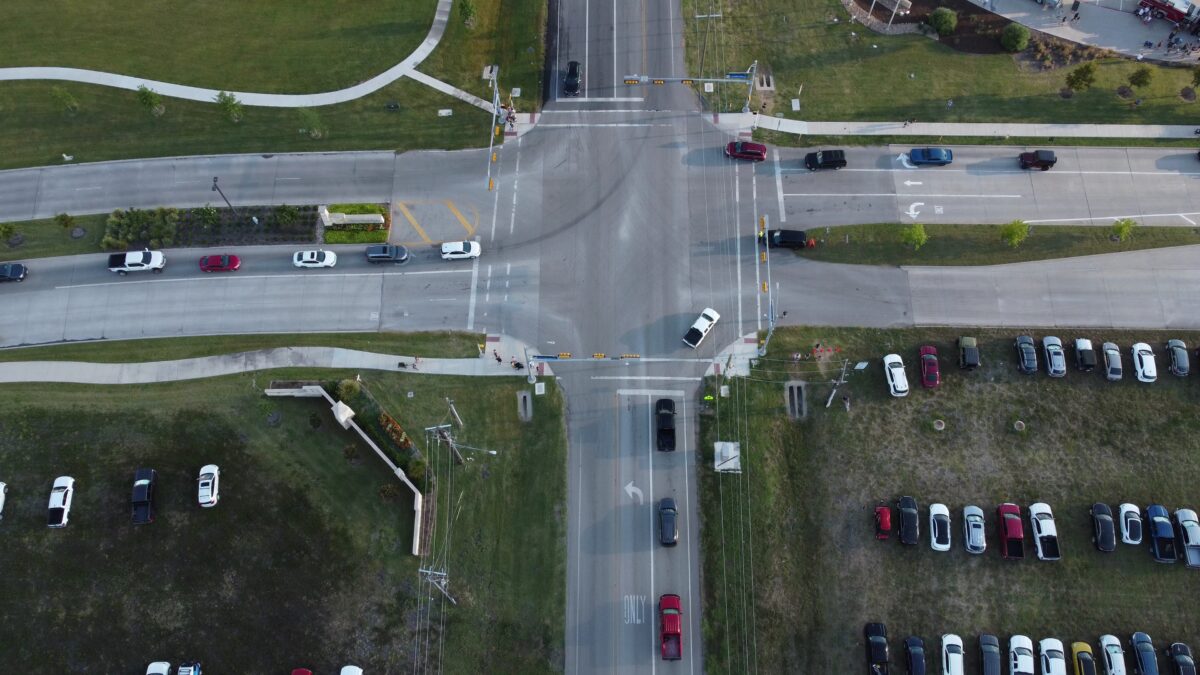Share the post "Driving In Texas With A Foreign License"
Perhaps you’re a tourist visiting Texas from another country or have moved to work or study. You worked hard to get your driver’s license in your home country and hope to be driving around Texas soon. But will your driver’s license be valid in Texas? Can you drive in Texas on a foreign license?
You can drive in Texas with a foreign license due to driving privilege reciprocity agreements with other countries. Foreign nationals can use their licenses from their home country for up to one year or 90 days after becoming a Texas resident, whichever comes first.
Key Points:
- Foreign nationals can drive in Texas with a valid foreign driver’s license for up to one year or 90 days after becoming a Texas resident.
- Texas has driving privilege reciprocity agreements with certain countries, allowing citizens to use their foreign licenses.
- Obtaining an International Driving Permit (IDP) is advisable if your foreign license is not in English.

Driving In Texas With A Foreign License
Driving privilege reciprocity legally allows you to drive in Texas if you have a valid, unexpired foreign driver’s license. You can use the license from your home country for up to a year or until you become a resident, whichever is soonest. When you become a resident, you must apply for a local license within 90 days to keep driving legally.
Driving privilege reciprocity refers to official agreements between countries that allow citizens to drive in each other’s countries with a foreign driver’s license.
Texas recognizes driving privilege reciprocity with some countries:
| Reciprocity | Agreement |
| USA – South/Central American Countries | 1943 Inter-American Convention on the Regulation of Inter-American Traffic |
| NATO countries | North Atlantic Treaty Organization |
| U.S. State Department list | |
| Commercial vehicles from Canada and Mexico |
The U.S. State Department also lists many other countries permitted to drive within its borders on a foreign license:
Armenia, Belarus, Azerbaijan, Estonia, Latvia, Kazakhstan, Lithuania, Tajikistan, Moldova, Terministan, Ukraine, Bosnia and Herzegovina, Ukraine, Croatia, Serbia, Slovenia, Macedonia, and Yugoslavia.
Regarding commercial licenses, the U.S. Secretary of Transportation only recognizes Canada and Mexico as possessing full reciprocity to drive in Texas.
Texas also has license-issuing reciprocity with Germany, France, Taiwan, and South Korea.
The international agreements are based on some of the following general principles:
- Reciprocal driving privileges apply to adults aged 18 to 75 for up to 12 months after arriving in the United States.
- Reciprocal driving privileges only apply to private vehicles.
- The foreign driver must display a legal registration certificate from the driver’s country on the back of the vehicle. This identifies the car and its owner.
- The vehicle must also carry an oval sign on the back indicating its country of origin.
- The driver must have a valid, legal, and unexpired driver’s license or international permit printed in English.

1943 Inter-American Convention On Driving In Texas
The Inter-American Convention on the Regulation of Inter-American Traffic was an international agreement between the United States and twenty South and Central American countries to establish uniform rules to regulate traffic between the countries.
The signatories of this convention recognize the jurisdiction of the foreign country they are in and must obey their laws. They must have registered vehicles in their home country and have a valid driver’s license.
These conditions give them the right to drive in that country using their licenses from their home country.
NATO Agreement And Driving In Texas On A Foreign License
The driving privilege reciprocity under the NATO agreement relates more to military personnel. The countries belonging to the North Atlantic Treaty could send their military forces to serve in another party’s territory.
The receiving state (which in this case would be Texas if foreign personnel were deployed there) would accept any valid driving permit, license, or military driving permit issued in the home country. Texas will, therefore, not require visitors from these countries to pass a driving test or pay a fee.
The receiving state (Texas) can also issue military personnel a Texas driver’s license without the applicant taking the skills test.
The military service vehicles must also carry a distinct sign indicating their nationality and vehicle registration papers.

Driving In Texas On A Mexican License
Mexican nationals can use their driver’s licenses from their home country to drive a Mexican-registered vehicle with Mexico number plates over 90 days. But if the person drives a U.S. registered car with U.S. number plates in Texas, the Mexican license will expire after 90 days.
Required Documentation for Driving In Texas
Driving in Texas with a foreign license can be a straightforward process, but it does require adhering to specific legal guidelines. Below are the steps and documentation needed for a foreign national to drive legally in Texas:
- Valid Foreign License:
- Your foreign driver’s license must be valid and up-to-date.
- It’s advisable to have an International Driving Permit (IDP) alongside your foreign license, especially if your license is not in English.
- Proof of Identity and Legal Status:
- Passport with the visa (if applicable).
- U.S. Department of Homeland Security documents, if required.
- Proof of Texas Residency:
- If you reside in Texas, you must provide proof of your Texas residency.
- Vehicle Registration and Insurance:
- If you own or use a vehicle, ensure it is correctly registered in Texas.
- Carry proof of insurance that meets Texas’s minimum coverage requirements.
- Obeying Texas Driving Laws:
- Familiarize yourself with and adhere to all Texas driving laws and regulations.
- Temporary Visitor Status:
- If you are in Texas temporarily, ensure your visitor status remains valid.
For a more thorough understanding, or if your stay will be extended, you might consider contacting a local Department of Public Safety (DPS) office or checking the latest guidelines on the Texas DPS website. Also, consulting a legal professional to understand the requirements and any other obligations might be beneficial, especially if you plan on residing in Texas for an extended period.
Remember, the above steps and documentation are general guidelines, and the exact requirements may vary based on your specific situation and any changes in Texas law or U.S. federal law.

Can You Get A Texas Driver’s License On A Visitor Visa?
Some visas permit visitors to spend extended periods in the U.S. It might be for business or study purposes, temporary work, or while receiving medical treatment. If you’re in Texas for an extended stay, a car will make your life easier, but you will need a current and valid driver’s license.
A temporary visitor is anyone:
- Not a citizen of the United States
- Not a United States National
- Not a legal permanent resident
- Not a refugee
- Not an asylum seeker
If you’re on a non-immigrant visa, you can use the driver’s license from your home country for the first 90 days, accompanied by your passport. Most car rental agencies will also accept this. Before the 90 days, you should apply for a Texas driver’s license.
Texas allows visitors on a B2 tourist visa to apply for a driver’s license. A visitor will have to take the local driving test, and on passing, they will get their Texas driver’s license, valid until the end of their stay. The card will have “Limited Term” printed on it.
Should you decide to apply for a Texas driver’s license, you will need to provide the following documents:
- Your passport will prove your identity and include the date when you are due to leave the country.
- I-94 confirms your date of departure
- Foreign driver’s license or IDP
- Vehicle registration document

Applying For A Texas Driver’s License As A Non-USA Resident
Applicants for a Texas driver’s license from another U.S. state, Canada, Germany, France, South Korea, and Taiwan, who have valid licenses from their countries, don’t have to do the knowledge or skills exams on condition they surrender their current licenses.
If they don’t want to give up their foreign license, they must pass all the required exams to get their Texas driver’s license. If people from these states or countries apply for a learner’s license in Texas, they don’t have to write the knowledge exam. Once they advance to a driver’s license, they must take the Impact.
Texas Driver course and pass the exam. If they are under 25, they must also have a driver’s education.
Reciprocity regulations only apply to regular passenger vehicles and do not include motorcycles or commercial vehicles. Foreign licenses in any other language besides English and Spanish will need to be translated before applying for a Texas license.

International Driving Permits
International Driving Permits (IDPs) serve as a supplementary identification to your home country’s driver’s license, providing a translation and verification of your license into several languages. Here’s how they pertain to driving in Texas:
- Usage:
- An International Driving Permit (IDP) is often used alongside your foreign driver’s license to help validate the license and translate information for law enforcement officials.
- It’s beneficial if your original driver’s license is in a language other than English.
- Validity:
- Texas recognizes valid IDPs accompanied by a valid foreign driver’s license.
- Typically, you can drive in Texas with an IDP and a foreign driver’s license for up to one year if you visit as a tourist.
- Acquisition:
- IDPs must be obtained in your home country before traveling to Texas. They cannot be issued in the U.S.
- Requirements:
- You must be at least 18 years old.
- Your home country’s driver’s license must be valid.
- You must carry your IDP and foreign driver’s license when driving.
- Limitations:
- An IDP does not replace a valid foreign driver’s license requirement.
- It also does not allow you to drive if your home country license is suspended or revoked.
- Application for a Texas Driver’s License:
- If you become a resident of Texas or plan to stay for an extended period, it is advisable to apply for a Texas driver’s license. Texas law requires residents to obtain a Texas driver’s license within 90 days of moving to the state.
- Insurance:
- Ensure you have adequate insurance coverage that complies with Texas’ minimum auto insurance requirements.
It’s wise to check the latest guidelines from the Texas Department of Public Safety (DPS) or consult a legal professional to understand all the requirements and obligations regarding driving in Texas with a foreign license and an IDP.

Renewing Your License
Renewing a foreign driver’s license in Texas isn’t straightforward, as Texas doesn’t renew foreign licenses. However, foreign nationals can use their valid, unexpired foreign driver’s license to drive in Texas for up to one year from entering the U.S. or until they become Texas residents, whichever comes first. Once a person becomes a Texas resident, they must apply for a Texas driver’s license within 90 days to continue driving legally in the state1.
Here’s a more detailed breakdown:
- Driving with a Foreign License:
- Individuals can drive with a valid, unexpired foreign license for up to one year from entry into the United States or until they become Texas residents.
- The reciprocal privileges are limited to private vehicles, and every vehicle must have a registration certificate issued following the laws of the country of residence.
- Every driver must have a valid driver permit, license, or international permit issued by an authorized authority and translated into English1.
- Applying for a Texas Driver’s License:
- Once an individual becomes a Texas resident, they have 90 days to apply for a Texas driver’s license.
- New Texas residents with a valid driver license from another U.S. state, U.S. territory, Canadian province, or qualifying country (France, Germany, South Korea, and Taiwan) do not need to take the knowledge or skills exams if they surrender their out-of-country driver license.
- Applicants from countries other than the U.S., Canada, France, Germany, South Korea, or Taiwan must take and pass both the knowledge and skills exams.
- Documents required include proof of identity, residency, citizenship or lawful presence, social security number, and Texas Vehicle Registration and Insurance for each vehicle owned2.
- Costs:
- The cost to renew a Texas driver’s license varies by age: under 18 years old is $16, ages 18 to 84 is $33, and 85 years old and older is $9. The fee for non-U.S. citizens with a temporary license is $333.
In summary, if you plan to stay in Texas for an extended period or become a resident, it’s essential to apply for a Texas driver’s license within the stipulated timeframe. This process involves surrendering your foreign driver’s license (if from a qualifying country) or passing the necessary exams, providing the required documents, and paying the associated fees.
Fines and Violations
Driving without the necessary paperwork and documents in Texas can result in various penalties and fines. Here’s a breakdown based on the type of missing documentation:
- No Driver License:
- The fine for driving without a driver’s license is $100 per year1.
- Expired Driver’s License or Registration:
- Under Texas law, violations for an expired driver’s license or registration can be dismissed upon proof (official receipt) that the matter was remedied within 10 working days of the ticket date. However, an administrative fee of $10.00 will be assessed2.
- Other Traffic Violations:
- The fines for most non-felony municipal court traffic violations have a $200 fine maximum. Any felony traffic violation carries a fine of up to $10,000. However, the total amount payable for a Texas traffic violation depends on the offense and facts of the case3.
- Variability by County:
- Traffic ticket fines can vary by county in Texas. It’s advisable to check the total fines listed on your traffic citation to ensure you pay the proper amount4.
It’s crucial to have all the necessary documents and paperwork to avoid these fines and penalties. If you are unsure about the documentation needed, it might be wise to consult with a legal professional or contact the local Department of Public Safety office for guidance.
Restrictions
The restrictions on driving in Texas are generally applied based on the type of driver’s license one holds, rather than the nationality of the driver. However, certain restrictions might apply to all drivers, including those with a foreign driver’s license. Here are some of the restrictions that could potentially apply:
- Restriction Codes:
- Texas has various restriction codes that may be placed on any driver license. Some of these include:
- Corrective Lenses (A): Required if the driver needs corrective lenses to meet the vision standards.
- Daytime Driving Only (C): Limits driving to daylight hours.
- Speed Not to Exceed 45 MPH (D): Limits driving speed to 45 mph or less.
- No Expressway Driving (E): Prohibits driving on expressways.
- Various others based on the specific circumstances of the driver12.
- Texas has various restriction codes that may be placed on any driver license. Some of these include:
- Driving with a Foreign License:
- Temporary Visitors:
- Temporary visitors who are issued a driver license or ID card will have “Limited Term” printed on it, and the driver license or ID card will expire when the period of lawful presence expires5.
There is no specific mention of nighttime driving restrictions or passenger restrictions solely for foreign drivers. The restrictions are more so based on the type of license and the driver’s particular circumstances.
For the most accurate and up-to-date information, it’s advisable to contact the Texas Department of Public Safety directly or consult with a legal professional familiar with Texas driving laws.
Next Steps
If you are planning to drive in Texas with a foreign driver’s license, following these steps will help ensure you comply with Texas law:
- Understand Texas Driving Laws:
- Familiarize yourself with Texas driving laws and regulations. The Texas Driver Handbook is a good resource for this.
- Obtain an International Driving Permit (IDP):
- If your foreign driver’s license is not in English, obtaining an International Driving Permit from your home country is advisable before traveling to Texas.
- Check Reciprocity Agreements:
- Texas has reciprocity agreements with certain countries. Check the Driving Privilege Reciprocity page on the Texas Department of Public Safety website to see if your country has a reciprocal agreement with Texas.
- Prepare Necessary Documentation:
- Have your valid, unexpired foreign driver’s license, IDP (if applicable), and passport readily available.
- If you become a Texas resident, you’ll need additional documentation to obtain a Texas driver’s license. The Moving to Texas page provides more details.
- Vehicle Registration and Insurance:
- Ensure your vehicle is properly registered, and carry proof of insurance that meets Texas’s minimum coverage requirements.
- Apply for a Texas Driver’s License (if becoming a resident):
- If you become a Texas resident or plan to stay for an extended period, apply for a Texas driver’s license within 90 days of becoming a resident. Visit the How to Apply for a Texas Driver License page for a complete list of requirements.
- Check Local Traffic Laws:
- Be aware that traffic laws and fines can vary by county in Texas. It’s advisable to check local traffic laws in the area you’ll be staying or driving.
- Seek Legal Advice (if necessary):
- If you have any concerns or questions regarding driving in Texas with a foreign license, consider consulting with a legal professional familiar with Texas traffic laws.
- Stay Updated:
- Check the Texas Department of Public Safety website for any updates regarding driving with a foreign license in Texas, especially if there are changes in the law.
By following these steps and ensuring you have the correct documentation, you’ll be better prepared to drive legally and safely in Texas with a foreign driver’s license.

Fun Facts About Texas Traffic Laws
If you’re driving in Texas on a foreign license, you must realize that you must still obey the state’s traffic laws, regardless of whether they differ from those in your home country.
Here are some bizarre ones that you may not know, even if you’re well on your way to getting your Texas license:
- You may not make U-turns in Richardson, Texas.
- You may also not put a “For Sale” sign up on a car in Richardson if it can be seen from the street.
- In Fort Worth, leaving your car without using the parking brake is illegal.
- Leaving the keys in the ignition while you’re away from your vehicle can earn you a $500 fine.
- Traffic law in Lubbock says it is illegal to drive with alcohol within arm’s reach, but the law includes the alcohol in the passenger’s body! Very weird!
- Texas does not require that vehicles have windshields. But you must have windshield wipers.
Texas Driving FAQs
Things To Remember About Driving In Texas As A Foreign National?
If you come from the U.K., Australia, South Africa, or any country that drives on the left side of the road, remember the USA drives on the right-hand side, and all traffic moves in the opposite direction. You must also always carry your driver’s license and registration document. Texting while driving is banned in Texas.
When Is It Necessary To Get A Texas Driver’s License?
Suppose you expect to stay in Texas for an extended period. In that case, getting a Texas license may be wise, as insurance companies are seldom keen to provide insurance to drivers with foreign licenses.
Share the post "Driving In Texas With A Foreign License"
Christian Linden is a seasoned writer and contributor at Texas View, specializing in topics that resonate with the Texan community. With over a decade of experience in journalism, Christian brings a wealth of knowledge in local politics, culture, and lifestyle. He holds a Bachelor's degree in Communications from the University of Texas. When he's not writing, Christian enjoys spending weekends traveling across Texas with his family, exploring everything from bustling cities to serene landscapes.











